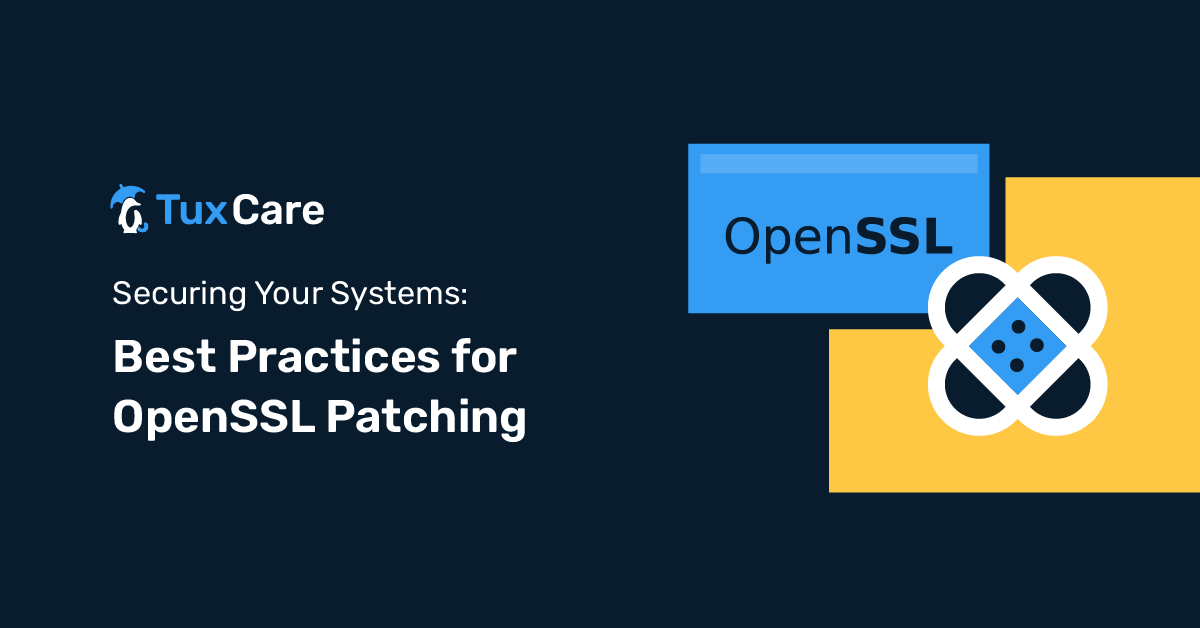Securing Your Systems: Best Practices for OpenSSL Patching
Patch management is an area that can’t afford negligence, especially when it comes to security libraries like OpenSSL. OpenSSL provides the foundational structures for secure communications, and vulnerabilities in this library can compromise an entire network. Yet, despite the clear risks, OpenSSL patching is frequently done haphazardly — largely due to lack of knowledge or awareness. This blog aims to shed light on some best practices, common mistakes, and tips to ensure secure and efficient OpenSSL patching.
Why OpenSSL Patches Are Crucial
OpenSSL is ubiquitous. Whether it’s to secure your website, create VPNs, or manage certificates, OpenSSL is often at the heart of your secure communication needs. Just one small vulnerability can lead to data breaches, unauthorized access, or worse. Therefore, OpenSSL patching should be an integral part of your security strategy.
Common Mistakes
Ignoring Updates
Most security teams are aware of the importance of patching, yet many make the mistake of not staying updated with the latest patches. Cybercriminals are constantly searching for and exploiting these vulnerabilities, so it’s critical to stay one step ahead.
Incomplete Patching
Another common mistake is incomplete patching. Installing the patch itself is only half the work. Properly testing it, updating relevant configurations, and ensuring that all instances of the software have been patched are also crucial steps in the process.
Service Interruption
Conventional patching often requires service interruptions. However, using advanced solutions like LibCare from TuxCare, an add-on to KernelCare Enterprise, can help automate this process without requiring reboots or scheduled maintenance windows. This is especially advantageous for enterprises already leveraging KernelCare Enterprise for automated kernel updates.
Best Practices
Regular Audits
Regularly auditing your systems for vulnerable instances of OpenSSL is the first step. Tools like Nessus or OpenVAS can be particularly useful for this purpose.
Automated Patching
Automating the patching process can save a considerable amount of time and reduce the chances of human error. LibCare can be a game-changer here, especially for organizations already familiar with KernelCare Enterprise. It automates vulnerability patching for OpenSSL and glibc, thereby removing the need for system reboots or scheduled maintenance windows.
Testing
Any patch, no matter how minor, should be thoroughly tested in a non-production environment before deployment. Automated testing tools like Jenkins or Travis CI can help streamline this process.
Monitoring
After successfully deploying a patch, continuous monitoring is necessary to ensure no new vulnerabilities have been introduced. Tools like Grafana integrated with Prometheus can provide real-time monitoring and alerts.
Integration with Existing Infrastructure
In a complex enterprise setting, OpenSSL often interacts with various other components. When it comes to automated patching with LibCare, the tool can be easily integrated into your existing infrastructure with minimal changes required. For instance:
- LibCare integrates seamlessly with alerting and monitoring tools like Grafana and Prometheus to offer real-time alerts.
- It is compatible with container orchestration tools like Kubernetes, ensuring that even your containerized applications remain secure.
- With a robust API, LibCare can be incorporated into your existing CI/CD pipelines, enhancing your DevOps workflow.
Tips for Efficient Patching
- Patch Prioritization: Not all patches are created equal. Some might be more critical than others. Utilize a risk assessment tool to prioritize patches.
- Documentation: Keep comprehensive records of what was patched, when, and how. This information can be invaluable in the event of an audit or security incident.
- Use a Centralized Patch Management System: A centralized system like LibCare can provide an overview of patch statuses across various servers and services, making it easier to manage and track.
Final Thoughts
Secure and efficient OpenSSL patching is not just a best practice; it’s a necessity in today’s security landscape. While mistakes are common, they are largely preventable through education and the right set of tools. LibCare offers seamless, automated OpenSSL and glibc patching without system reboots or downtime – making it the perfect add-on to KernelCare Enterprise, which delivers non-disruptive kernel patches to most popular Linux distributions.
For more insights on securing your systems, check out our previous post on Infrastructure as Code: A Double-Edged Sword to Azure.
The tools and practices outlined here aim to make the patching process less daunting and more effective. With proper planning, automation, and continuous monitoring, your systems can remain secure and efficient.



 Documentation
Documentation Login
Login




